Ku Klux Klan today
Categories: World
By Pictolic https://pictolic.com/article/ku-klux-klan-today.htmlFor members of the Ku Klux Klan, burning a cross is not sacrilege, but a sacred act.
Members of this deeply secret organization quite often gather in the field for the so-called "burning of the cross." This ceremony is held as a sign that Christianity - according to the Ku Klux Klans - is a "whites only" religion. Holding rituals together serves to strengthen the cohesion between them. Dressed in white robes, members of the organization set up a wooden cross and stand in a ring around it. After a group prayer, men and women throw their burning torches in the direction of the cross and spread their arms to the sides, as if imitating its shape. “From conversations with members of the clan, I concluded that for them this is truly a spiritual sacred act,” says Tyler Cacek, a photojournalist who has been researching and photographing clansmen since 2009. “They really think it brings them as close to the Lord as possible.”
(Total 17 photos)
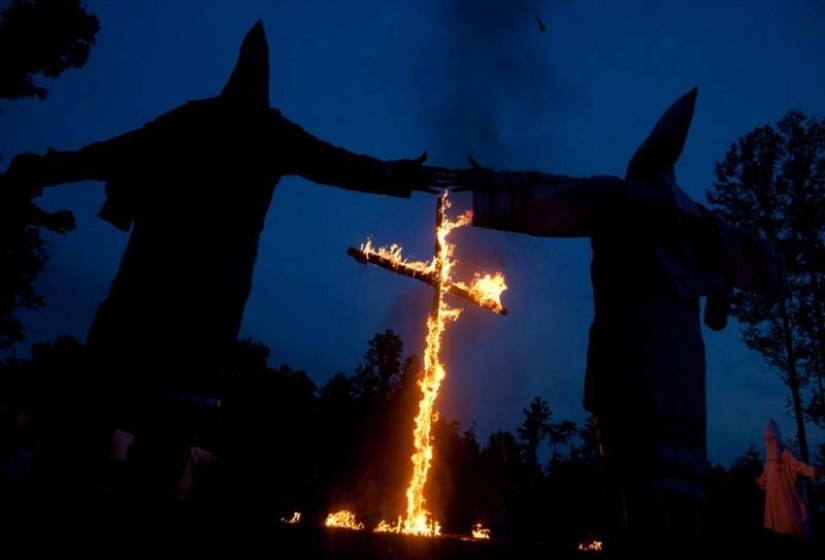
Founded by veterans of the Confederate Army, the KKK first came into its own in 1865. Subsequently, this organization ceased to exist and was revived several times - first as an insurgency in the south during the reconstruction, then as a racist, anti-Semitic and anti-immigrant “brotherhood”, and finally, according to many sources, as a subversive terrorist organization that opposes the equality of citizens . The influence of the KKK in the 20th century either grew or declined significantly. It reached its peak in the 1920s, when the organization had up to six million members. The American Anti-Defamation League estimates that the membership of the KKK has now shrunk to 5,000 members, with about 40 regional chapters.
Kaczek would immediately like to emphasize that he is not a supporter of the KKK. The purpose of his photo essay, entitled "Love is hate," is the desire to understand how and why seemingly reasonable people come to accept a delusional ideology. “It's one thing to try to understand them, quite another thing to agree with them,” he says. “As a photographer, I want to show the human aspect of this situation and how these people come to their beliefs.”
People join the Ku Klux Klan for a variety of reasons, sometimes influenced by family, sometimes despite it. These people sometimes feel like victims of oppression. Their negative experience of communicating with specific people from other strata of society often forms their attitude towards the group as a whole. Skirmishes with immigrants or minorities are one example. There are also more extreme situations. “I know a guy whose brother was killed by a gang in Chicago,” Kaczek says. “It strengthened him in his conviction that racial segregation is the only way to solve many problems.”
Gaining the trust of the Klan members has not been easy: they are understandably suspicious of the media. They have repeatedly had problems with journalists, police informants and the government. Although Kachek has been able to establish working relationships with a number of Klansmen and photograph members of several groups in Kentucky and Virginia, he still faces challenges that limit his ability. The members of the Klan wish to maintain an aura of mystery—hence the white robes—and also insist that their portraits feature peaked hats and swastika tattoos. All this symbolism "makes it very difficult for me to gain access to something deeper and more significant."
Tai Kacek - documentary photographer; he is currently studying at the University of Missouri.
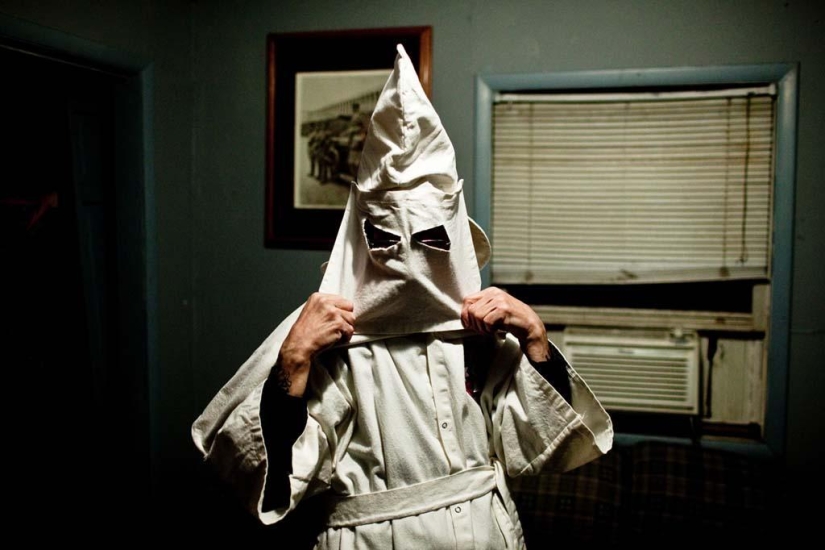
1. Klansman Jim Scheeley prepares to ignite the cross at the clan grounds in Dawson Springs, Kentucky, on the evening of March 27, 2010.
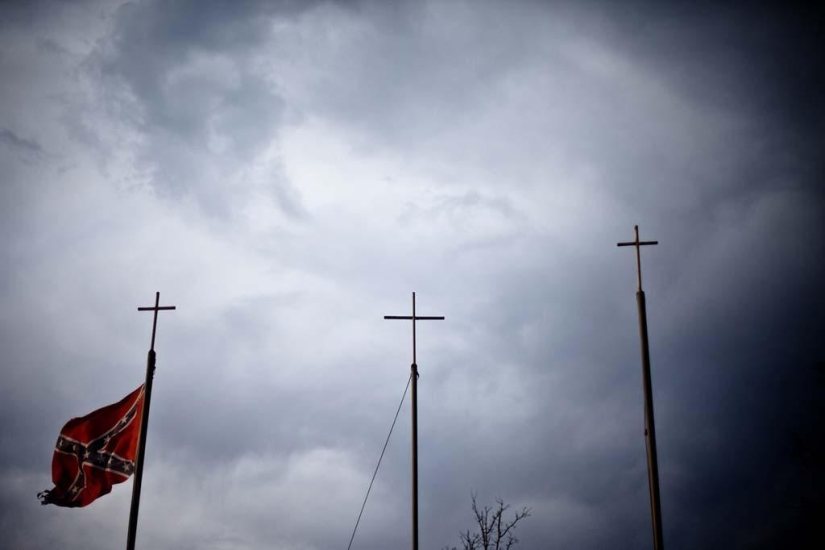
2. Crossed Confederate flag poles mark the clan's territory in Dawson Springs, Kentucky, on March 27, 2010.
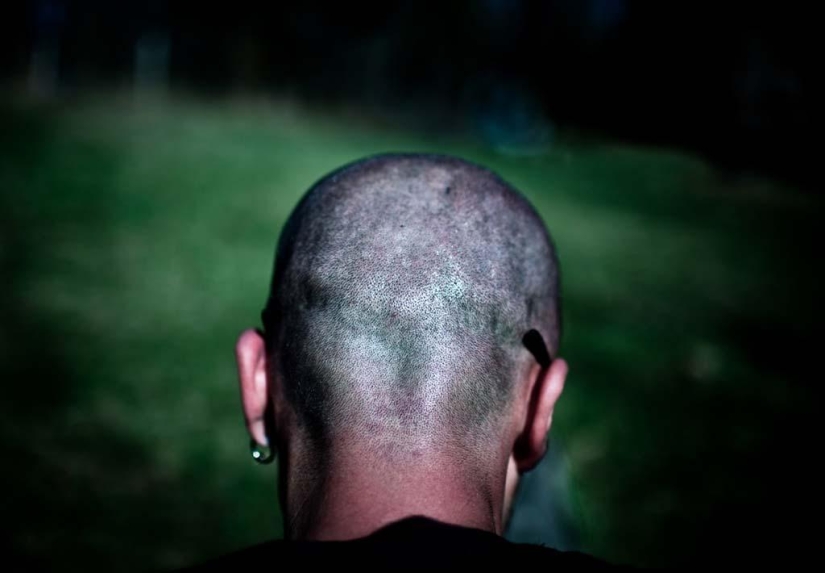
3. Shaved head Jason Gering (Jason Ghering) nicknamed “Gul” (“Goul”). A new member of the Imperial Clans of America at Clan grounds in Dawson Springs, Kentucky on May 27, 2010.
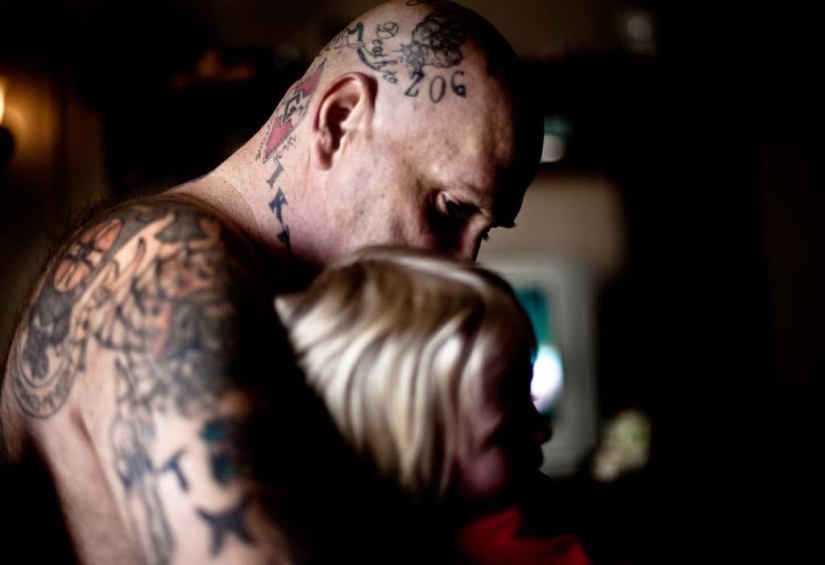
4. Ron Edwards, former Imperial Master of the Imperial Clans of America, with his daughter at his home in Dawson Springs, Kentucky, March 27, 2010. He is currently serving a prison sentence for drug possession.
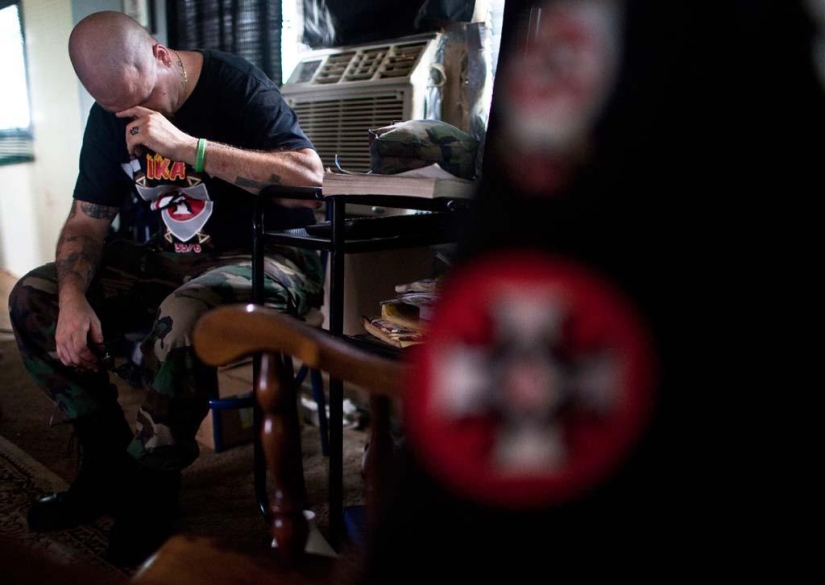
5. Depressed by the troubles of his latest arrest for marijuana possession and low attendance at this year's Nordicfest, Klansman Jeremy Katro hung his head; June 6, 2010 “So now everything is messed up,” he says. “It seems like everyone has abandoned you.”
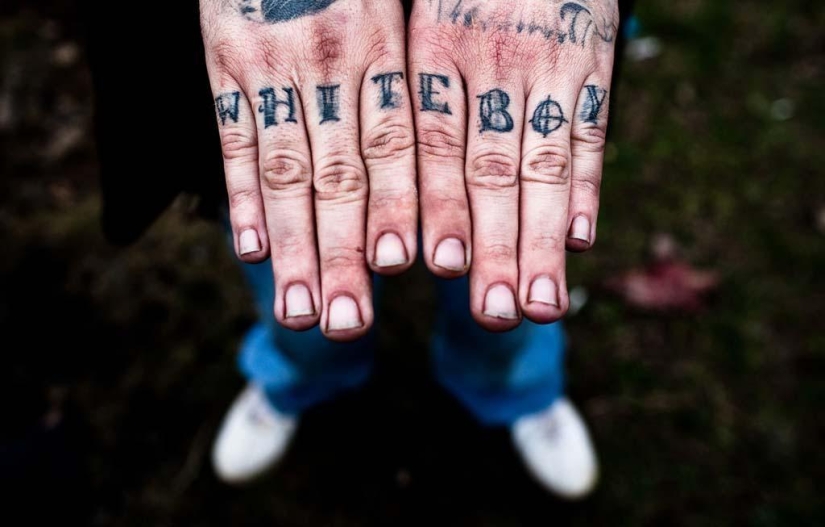
6. A tattoo that reads "Whiteboy" adorns the fingers of a newly minted member of the Imperial Clans of America at the clan's territory in Dawson Springs, Kentucky, on May 27, 2010. According to Klan senior adviser Jim Shealy, membership figures are kept strictly secret, although new candidates often come and go.
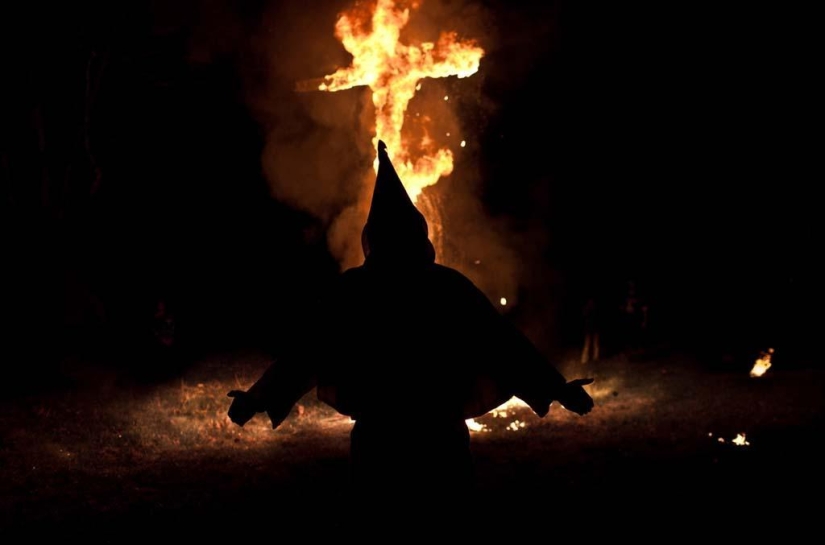
7. Dressed in Ku Klux Klan robes, men and women gather after sunset for a semi-annual burning of the cross at the territory of the Imperial Clans of America in Dawson Springs, Kentucky, March 27, 2010.
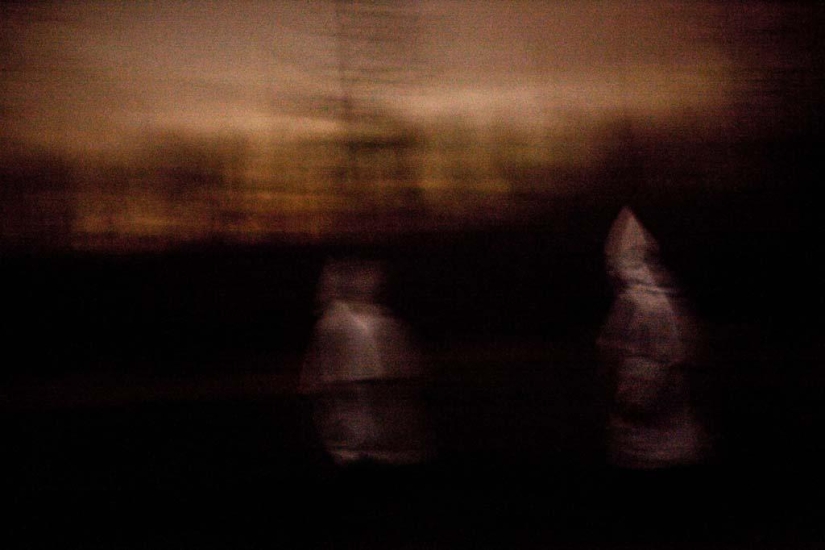
8. Dressed in Ku Klux Klan robes, men and women after the ceremony of semi-annual burning of the cross in the territory of the Imperial Clans of America in Dawson Springs, Kentucky, March 27, 2010.
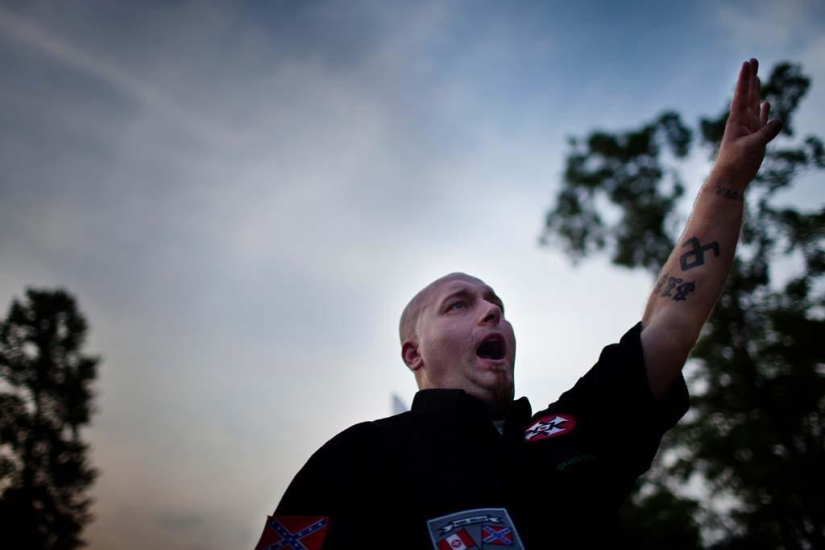
9. The exalted Cyclops, also known as the regional officer of the Klan Dwayne Bridendolph (Dwayne Bridendolph), raises his hand in a Nazi salute to Hitler, shouting "White power!" (“White Power!”) performing at a Klan gathering in Martinsville, Virginia on July 2, 2011.

10. Preparation of the cross for burning at the territory of the Imperial Clans of America in Dawson Springs, Kentucky, May 29, 2010.
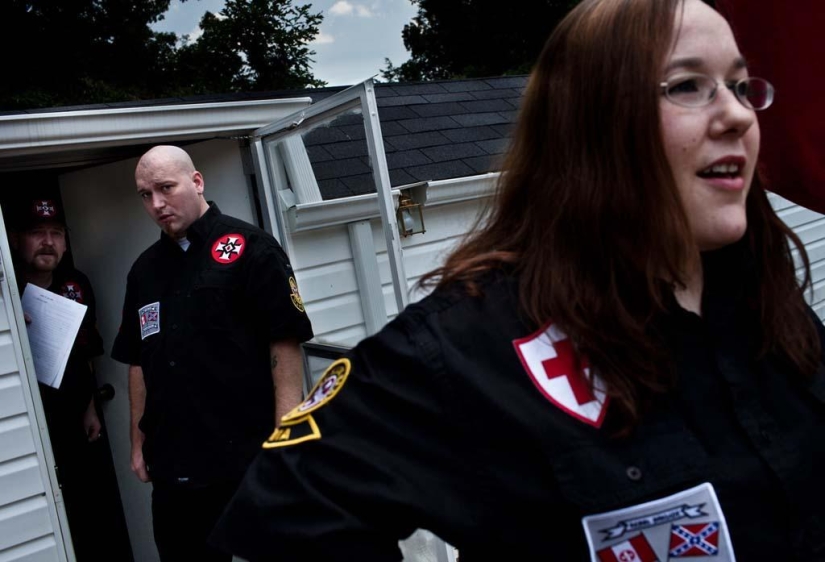
11. Klan leader Amanda Barker (Amanda Barker) takes the oath of recruits near her trailer before the ceremony of lighting the cross on July 2, 2011.
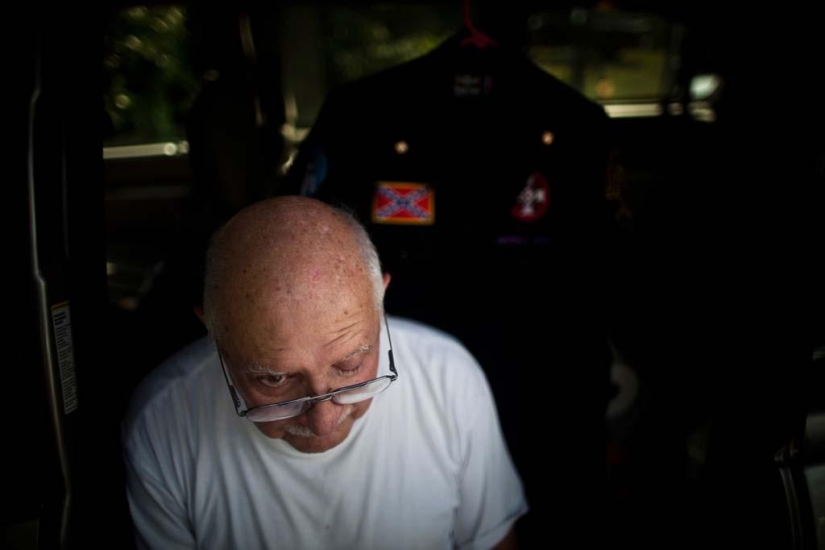
12. Paul Decoste, Clan Imperial Giant, stands in front of his uniform during a rally in Martinsville, Virginia, on July 2, 2011.
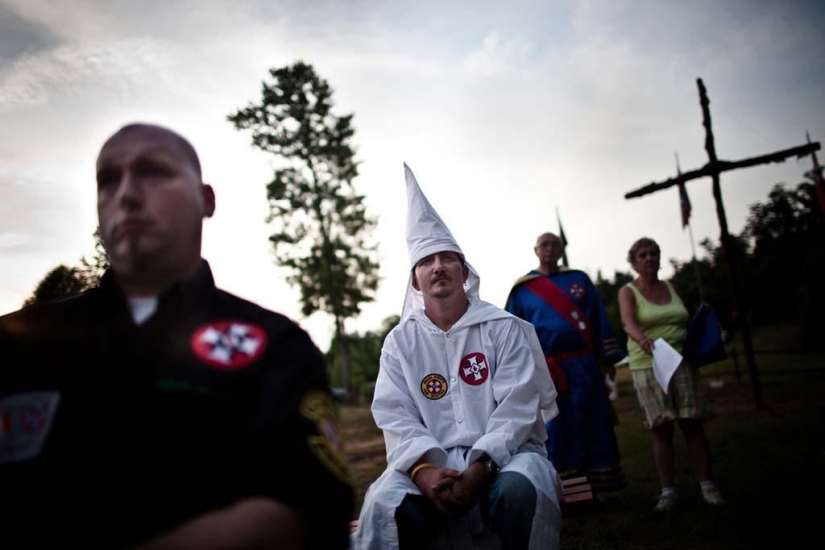
13. Members of the Klan sit and listen to a speaker during a rally in Martinsville, Virginia, July 2, 2011.
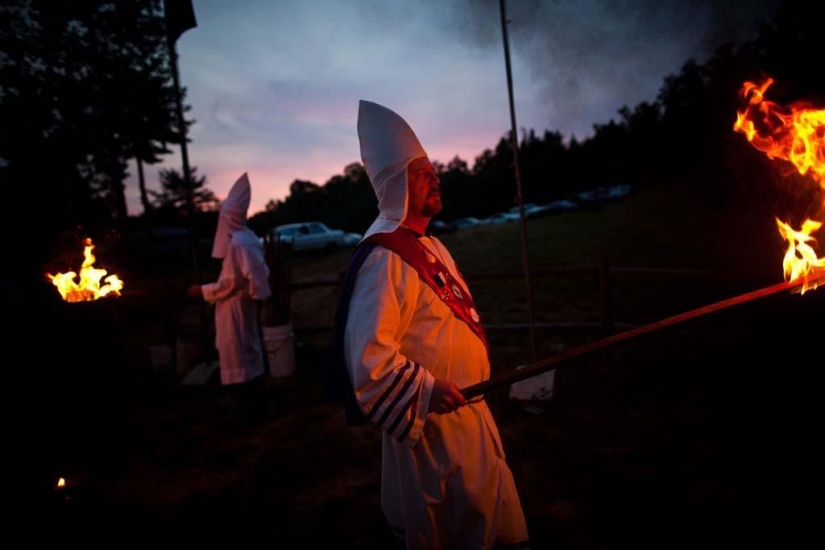
14. A brigade of the Rebel Knights of the Ku Klux Klan opens the ceremony of lighting the cross on July 2, 2011.
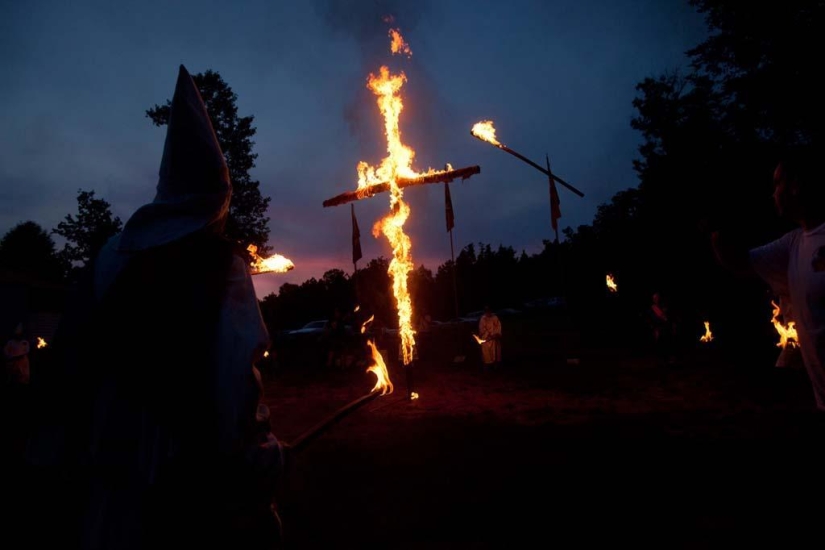
15. Cross burning ceremony on July 2, 2011. The Klansmen call this ritual the “Illumination of the Cross” and perform it as a sign of their religious beliefs in the “Light of Christ” and that Christianity is a religion exclusively for whites.
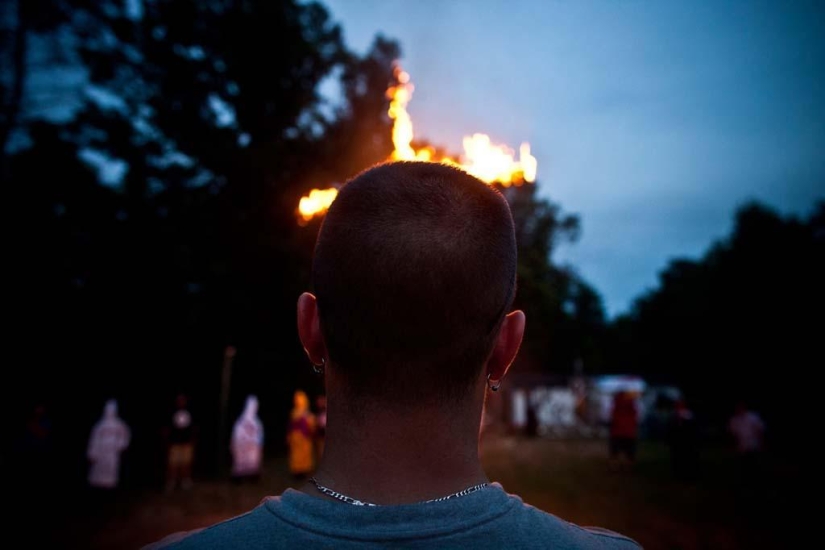
16. A young member of the Klan attends a cross burning ceremony in Martinsville, Virginia on July 2, 2011.
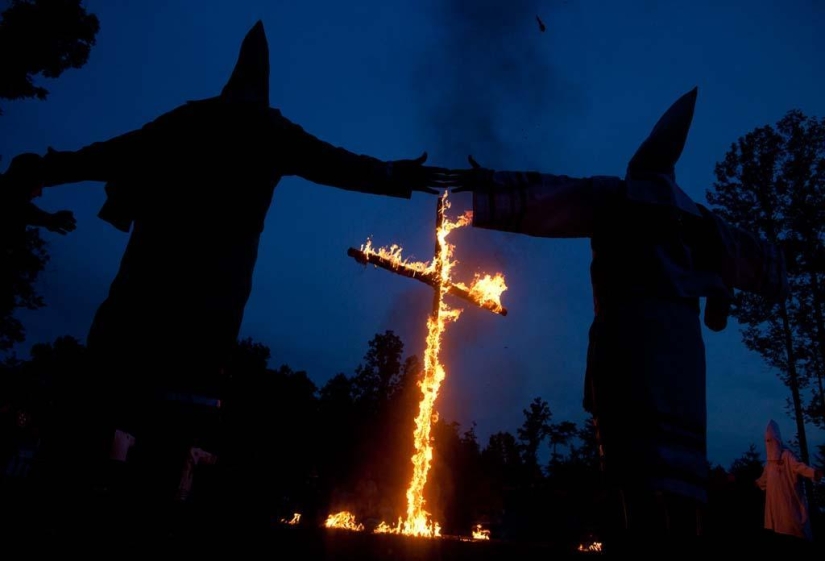
17. Brigade of the Rebel Knights of the Ku Klux Klan during the ceremony of lighting the cross on July 2, 2011.
Keywords: Ku Klux Klan | Neo-Nazism | Racism | USA
Post News ArticleRecent articles

Have you had a rough week? We have something that will help you forget about the accumulated fatigue and irritation. This ...

The Titanic, the legendary ship that sank on April 15, 1912, was discovered in 1985 by Robert Ballard and Jean Louis Michel. After ...
Related articles

Since 1994, there has been a small town called Orania on the territory of South Africa. It is inhabited exclusively by white ...

U.S. 70-ies of the last century, racial segregation have almost ceased to remind myself. Dark-skinned artists, actors and ...

He was the last of his tribe, all of whose members were killed by Belgian soldiers. Despite the fact that slavery in the United ...

What is a brook? It is usually a small stream of water fed by groundwater, rain or melt water. We are used to thinking of brooks as ...